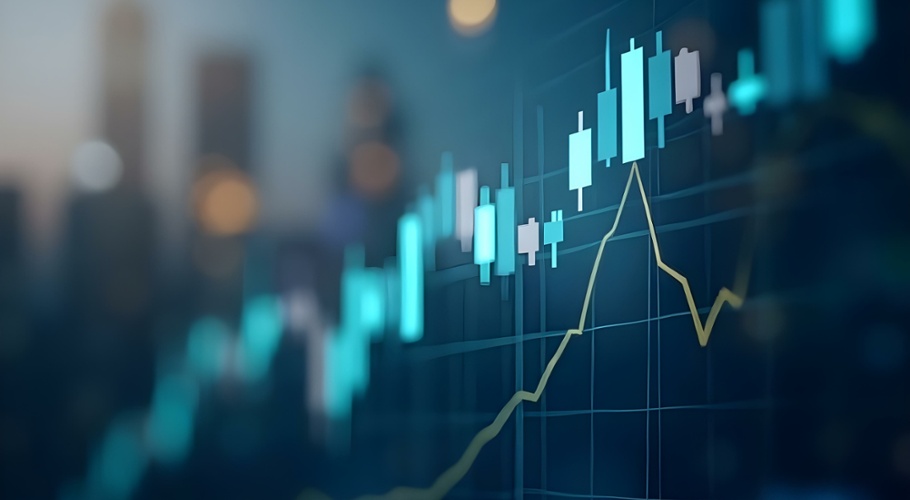Investing in Thematic ETFs now needs Active Management
Investors have been rapidly embracing the benefits of low-cost passive investing, with more money coming out of actively managed funds into the index tracking funds over recent years, fueling a big growth in so called thematic ETFs which track a specialist sector or investment theme.
At the end of May 2022, there were 247 ETFs on the ASX with a market capitalisation of $128.3 billion, a rise of nearly 20% from the year ago level. Of the total number of ETFs, it is estimated around 20% can be classed as thematic ETFs.
In general, what sets a thematic ETF apart is that, rather than a standard stock index like the ASX 200, a thematic ETF aims to track a set of stocks in sectors that are seeing some dramatic structural change, which is reshaping business, or society more generally. They are sectors that tend to be seeing higher growth rates, major efficiency gains or transformative innovations.
“Thematic ETFs combine the benefits of an ETF – namely convenience, diversification and transparency – with exposure to long-term megatrends,” said Blair Modica, Director, Adviser Business at ETF issuer BetaShares.
On the ASX, these thematics have code names such as FOOD, ACDC, ROBO, HACK, DRIV, ERTH, CRYP, FANG, and DRUG.
BetaShares Global Agriculture Companies ETF (ASX:FOOD), for example, is one of the newest ETFs on the ASX, which tracks the world's leading agriculture companies. It targets investors interested in the ‘future of food’, a segment of the global food industry that focuses on more sustainable, humane and healthier ways to produce the food we eat.
ACDC refers to the Battery Tech & Lithium ETF which aims to give investors exposure to fast growing world of energy storage and production. ROBO is the Global Robotics and Automation ETF and invests in companies in the robotics, automation and artificial intelligence fields. HACK is the ticker for the Global Cybersecurity ETF. ERTH is for the Climate Change Innovation ETF and DRIV is for Electric Vehicles and Future Mobility ETF.
An active approach now required
While thematic ETFs offer investors easy access to some of the most topical themes of the day with great potential to grow, as they can be quite specialised they can require a lot more “active” involvement by investors than your traditional broader stock market ETF.
“When considering a thematic ETF, investors should be aware they are not all created equal. As a result, investors should be cautious about using any thematic ETF that is based on a short-term theme. A true thematic ETF should be based on a megatrend that will play out over the long term,” said Mr Modica.
Rather than buying the ETF because it’s been talked about in the media, investors need to analyse the real story behind the theme. It should be a change or trend that is likely to last, be logical and have hard data to back up the story being presented.
Thematic ETFs to a degree require an element of ‘timing the market’, which carries risks. Understanding how the theme will age and over what timeframe it is expected to play out is also key because that will help determine when it is time to exit.
Indexing costs drive fees
Another issue to focus on is the quality of the underlying index the ETF will seek to track. Identifying the right companies involved in these mega themes cannot be done in a purely passive manner as they are often smaller, more innovative firms that have yet to be captured in any of the major market indexes.
The ROBO ETF for example, tracks an index compiled by a US research firm specialising in this area, and consists of 87 companies, comprising 25 established leading players whose core business is directly related to robotics and automation and 62 smaller companies with a proportion of their business in robotics and automation, that have been determined to have the potential to grow through innovation and market adoption of their products.
Compiling and managing these indexes costs money and is part of the reason thematic ETFs can have higher fees than more traditional ETFs.
Trends may be quickly priced in
Another feature of these thematic ETFs is that the timing of their launch tends to be linked to when retail interest in that sector is at its peak. The ETF providers will often see a theme emerging and seek to capitalise on this interest.
One of the issues with this approach is that by the time a thematic ETF has hit the market, often much of the return may already be built into the share price of the companies within it.
Take the ACDC ETF for example. Climate change, the rising demand for renewable energy, the growth of electric carmakers like Tesla and even the popularity of its owner, Elon Musk, the world’s richest man, all boosted interest in this sector among investors. This certainly made the ETF a stronger performer initially but year to date this ETF is down around 13%.
Timing is crucial
Marc Jocum, investment manager of Stockspot said: “Generally, newly launched ETFs follow themes that have performed well over the short term. The recent positive performance can trick investors into placing bets against future performance. However, like most themes, they tend to mean revert and that can lead to market timing which is extremely hard to get right”.
Jocum lists three key things investors to be wary of when it comes to thematic ETFs. The first is higher fees. Jocum estimates the average thematic ETF charges 0.57% per year in fees, which is five times the cost of a broad-based share ETF.
The second issue is that thematic ETFs tend to have shorter life spans. “Thematic ETFs can get terminated if they do not attract enough money,” he said.
The third issue is one of performance. “Unfortunately, trendy thematic ETFs have lost Australian investors more than $100 million over the past year.”
Kenneth Lamont, senior research analyst at Morningstar said: “Thematic ETFs are a bull market phenomenon. We have seen it in multiple different cycles, you see many of these ETFs launching into bull markets and then closing in bear markets.”
There is no doubt with interest rates on the rise and economies set to slow, equity prices and yield across the board will be under pressure. Thematic ETFs are not immune to this in the short term but identifying and actively monitoring a solid transformative megatrend, backed by solid data, that has a sensible entry point and is likely to appeal to a broad range of investors. This means they can potentially play a role in portfolio outperformance.
Thematic ETFs that are based on genuine megatrends may have a place in a diversified portfolio and are best suited for active investors seeking exposure to growth assets. However, always ensure any portfolio comprising thematic ETFs also has plenty of diversification.

